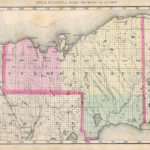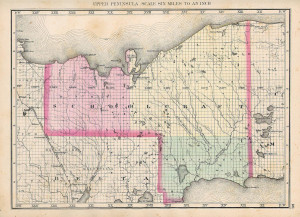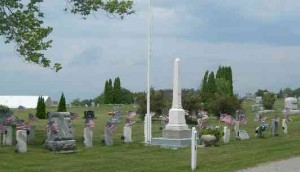Schoolcraft county was organized in 1876. It is bounded on the north by Lake Superior, on the east by Chippewa and Mackinac, on the south by Delta and Lake Michigan, on the west by Delta and Marquette. It is the fourth county in the State in size, and has an area of 2,196 square miles. Manistique, a growing town of 700 inhabitants, situated in the southern portion of the county on Lake Michigan, is the county seat. The northern and northwestern portions of the county are heavily timbered with white pine of good quality, growing on land also heavily timbered with maple, birch, and bass wood. The soil in this section is a sandy loam. The middle and western part comprises what is known as the Manistique flats—lands generally level, but with a descent to the southeast sufficient for drainage. Those lands have been largely overflowed, occasioned by beaver dams in the numerous streams or branches of the Manistique. The soil is a vegetable deposit or muck with a subsoil of marl, clay, and sand, underlaid with lime rock. Large marshes are interspersed with grass of the finest quality. The timber is principally pine on the ridges, and spruce, cedar, etc., near the rivers. The eastern and southern portions are more rolling and timbered with hardwood maple, birch, basswood, and elm on the highlands, and cedar, pine, and hemlock on the lower lands. The soil is a dark sand loam on lime rock and clay, and is a very desirable agricultural region. Homestead entries are numerous and the settlers prosperous. This portion embraces a portion of the Manistique lake region.
Tag Archives: Michigan
George F. Fuller Post, No. 257 – Manistique, MI
The George F. Fuller Post, No. 257 – Grand Army of The Republic
The Fuller Grand Army of the Republic Post was organized in Schoolcraft County on June 16th, 1884. This fraternity was open to honorably discharged veterans who had served in the Union Army during the American Civil War (1861-1865). The G.A.R. post in Manistique was named after George F. Fuller. Mr. Fuller served with the 45th Pennsylvania Infantry and was enlisted into Co. E as a Private on November 13, 1864. He was discharged on July 17, 1865 at Alexandria, Virginia. Mr. Fuller moved to Michigan with his family after the war and eventually settled in Schoolcraft County. He died in 1875. At the time of the organization of the Fuller GAR post, Mr. Fuller was the only soldier buried in the Lakeview Cemetery.
The Flood Of 1920-Palm Sunday
The Flood Of 1920-Palm Sunday (March 28th, 1920) Manistique, MI-The most catastrophic event to occur in Manistique other than the fire of 1883 was the flood of 1920. Floodwaters began pouring over the flume walls in the early morning of Palm Sunday, March 28, 1920. The immediate cause of the flood was an ice jam on the Driggs River that backed the river up. When the jam broke, the water and logs in the river rushed into the Manistique River. Since the winter had an exceptional snowfall along with warmer than normal temperatures and several days of rain, the rivers draining into the Manistique River were already swollen. With the torrent of water, a west bank wall broke, causing water to rush over the flume walls and into the west side of Manistique all the way down Deer Street and Chippewa Avenue.
Manistique’s “Big Fire”
The fire on Friday, September 15th, 1893, was called Manistique’s “Big Fire”. The Fire began on South Walnut Street and spread to both sides of Cedar Street. Since all the buildings except one on Cedar Street were wood, the devastation was extensive. The fire on the West Side of Cedar Street stopped only because Blumrosen’s store was brick. Due to the wind and power of the fire, the volunteer fire department fought if for five hours, trying to stop it from consuming the residential district. Had it not been for an evening rain, the entire town would been ashes. Losses from the fire were around $75,000 (several millions in today’s dollars). As a result of this fire, the city passed an ordinance saying all buildings in the downtown area were to be brick buildings.



